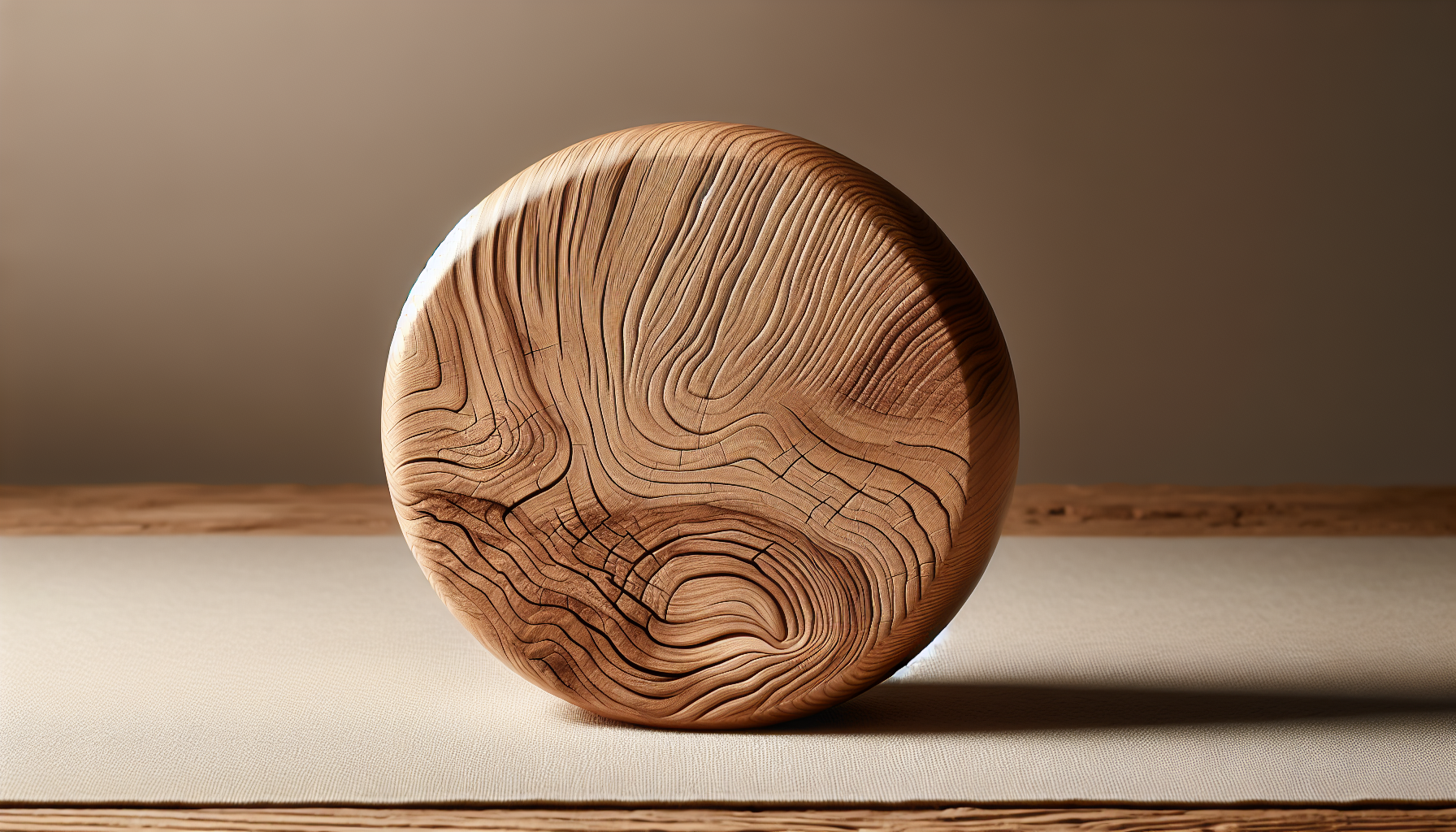Have you ever wondered what makes Japandi interiors so captivating? The combination of Japanese minimalism and Scandinavian functionality creates a space that feels both serene and inviting. One of the key elements that contribute to this harmony is the use of natural woods. Understanding the types of wood commonly used in Japandi designs can help you appreciate these spaces even more and perhaps inspire you to incorporate similar elements into your own home.
The Essence of Japandi Design
Japandi design embodies a philosophy that values simplicity, natural materials, and craftsmanship. It is characterized by clean lines, neutral colors, and an overall sense of balance. The warmth of natural wood plays a crucial role in achieving this aesthetic. By using various types of wood, Japandi interiors create an environment that feels both peaceful and functional.
The Role of Natural Wood in Japandi Interiors
Natural wood serves multiple purposes in Japandi decor. Not only does it add warmth and texture to a space, but it also connects the indoors to the natural world outside. In this style, wood is often left in its natural state, highlighting the unique grains and imperfections that tell a story. This brings a sense of authenticity to your surroundings, encouraging you to appreciate the beauty in imperfection.
Common Types of Natural Woods in Japandi Interiors
There are several types of natural woods that are frequently used in Japandi interiors. Each type brings its own character to a space. Let’s take a look at some of the most popular options.
1. Oak
Oak is a sturdy and versatile wood. Known for its durability, it can be stained or left natural to show off its distinct grain patterns. Oak’s light to medium brown hues fit seamlessly into Japandi interiors, enhancing the natural feel of the space. Additionally, the wood’s strength makes it an excellent choice for furniture that needs to withstand the test of time.
2. Maple
Maple has a fine, consistent grain that offers a contemporary feel while still being warm and inviting. Its light coloration allows it to blend effortlessly with other elements in Japandi design. Maple finishes well and has a subtle sheen, which can bring a touch of elegance to your home. Whether used for flooring or furniture, maple adds a clean and polished look without being overly flashy.
3. Walnut
Walnut is favored for its rich, dark tones and striking grain patterns. This wood adds depth and warmth to a space, making it a perfect choice for statement pieces like a dining table or accent cabinets. The luxurious appearance of walnut can elevate the overall aesthetic of your home while still adhering to the principles of minimalism that define Japandi design.
4. Birch
Birch has a pale color that ranges from creamy white to light brown, making it another excellent choice for maintaining a bright, airy space. The fine grain allows it to be versatile in both modern and traditional settings. Birch is often used in furniture, such as chairs and tables, giving a clean and simple look that aligns with Japandi aesthetics.
5. Ash
Ash is a strong and lightweight wood that comes in a range of light beige hues. This type of wood boasts a unique, open grain that can add texture to your interiors. Additionally, ash is often used for furniture pieces that require bending or curving, thanks to its flexibly. In Japandi design, ash brings functionality and style together, creating pieces that are both eye-catching and practical.
6. Teak
Teak wood is celebrated for its natural resistance to water and decay. This makes it an excellent choice for both indoor and outdoor furniture. Its warm, golden-brown tones and beautiful grains make it a luxurious option for Japandi interiors. Teak is often left untreated, allowing its natural oils to shine through, which adds depth and character to your living space.
7. Cherry
Cherry wood is known for its rich, reddish-brown hue that deepens beautifully over time. This type of wood lends a sense of warmth and opulence to Japandi interiors. The smooth grain and inherent elegance make cherry ideal for timeless furniture pieces that can be cherished for years. Whether you incorporate cherry cabinetry or a statement cherry table, you’ll find that it brings a touch of sophistication to your space.
8. Larch
Larch is characterized by its unique, pronounced grain patterns and refreshing light tones. This wood is not only durable but also has a beautiful texture that can inject a sense of nature into your interiors. Larch works well in a variety of applications, from flooring to furniture, and is a fantastic choice for creating a cohesive, earthy aesthetic.
9. Cedar
Cedar is revered for its aromatic qualities and natural resistance to pests and decay. The rich reddish-brown color and unique grain make it a fantastic choice for accent pieces or even wall paneling. In Japandi design, cedar adds a warm, inviting scent to your space, further enhancing the connection to nature.
10. Fir
Fir is often used for its strength and stability. Its light color and straight grain make it an appealing choice for contemporary Japandi designs. Fir’s durability also makes it ideal for structural elements, like beams or framing. By incorporating fir into your decor, you can create a strong yet understated backdrop for other design elements.
11. Pine
Pine is a popular choice for a more rustic Japandi look. Its light color and unique knots add character and warmth, making it a lovely material for furniture and flooring. Pine is also affordable and widely available, making it accessible for anyone looking to embrace the Japandi aesthetic without breaking the bank.
Caring for Natural Wood in Japandi Interiors
Maintaining the beauty of natural wood in your home is essential for keeping your Japandi interiors looking fresh and inviting. Here are some tips to help you care for your wooden elements.
Regular Dusting
Wooden surfaces should be dusted regularly to avoid a buildup of dirt and grime. Use a soft cloth or microfiber duster to gently wipe down furniture, shelves, and decor items. This will help maintain the natural beauty of the wood while preventing scratches.
Gentle Cleaning
When it comes to deep cleaning, use a damp cloth and a mild soap solution to wipe down surfaces. Avoid using harsh chemicals that can damage the wood’s finish. Make sure to dry the wood thoroughly after cleaning to prevent moisture damage.
Condition the Wood
To maintain the luster of your wooden pieces, consider using a wood conditioner or furniture polish designed for natural finishes. These products can help protect the surface while enhancing its natural beauty.
Avoid Direct Sunlight
Direct sunlight can cause color fading and warping of wooden surfaces over time. If possible, arrange your furniture to minimize exposure to harsh sunlight, or use sheer curtains to diffuse the light.
Humidity Control
Wood can expand and contract based on humidity levels. Keeping the humidity in your home consistent can help prevent warping or cracking. Using a humidifier during dry months and a dehumidifier during damp seasons can help maintain a comfortable environment for your wood pieces.
Incorporating Natural Wood into Your Home
Feeling inspired to bring some of this natural wood beauty into your own home? Here are some practical ideas to help you get started.
Furniture Selection
Choose furniture pieces made from the natural woods discussed above. Look for items that emphasize clean lines and functionality, such as a simple wooden dining table, sleek chairs, or a minimalist coffee table. The key is to select pieces that highlight the beauty of the wood while providing comfort and utility.
Accent Pieces
Incorporate decorative items made from natural wood, like bowls, sculptures, or picture frames. These smaller elements can add warmth and personality to your space while complementing the overall Japandi aesthetic.
Wall Treatments
Consider using wood paneling or natural wood finishes on walls to create a feature wall. This adds depth and texture to your space without overwhelming it. Choose lighter woods for a brighter feel or darker woods for a cozier, more intimate environment.
Flooring Options
If you’re planning a remodel, consider wood flooring made from natural materials. Light-toned woods, like maple or birch, can create a sense of openness, while darker options, such as walnut or cherry, can add warmth and sophistication.
Accessories and Textiles
Pair your natural wood elements with textiles that embody the Japandi style, such as neutral cushions or linens. This combination helps create a harmonious ambiance, allowing the warmth of the wood to shine through without being overbearing.
Conclusion
Natural woods are an essential component of Japandi interiors, providing warmth and a connection to nature while embodying simplicity and functionality. By understanding the different types of wood commonly used in this design philosophy, you can appreciate your surroundings more deeply and think creatively about how to incorporate these elements into your own home.
Whether you choose to furnish your space with beautiful oak pieces or introduce accents of rich walnut, the key is to celebrate the natural beauty of wood. By focusing on maintaining these elements, you’ll create an inviting and serene environment that embodies the tranquility of Japandi design. Let your space reflect a connection to nature and an appreciation for craftsmanship, and watch as your home transforms into a calming oasis.

